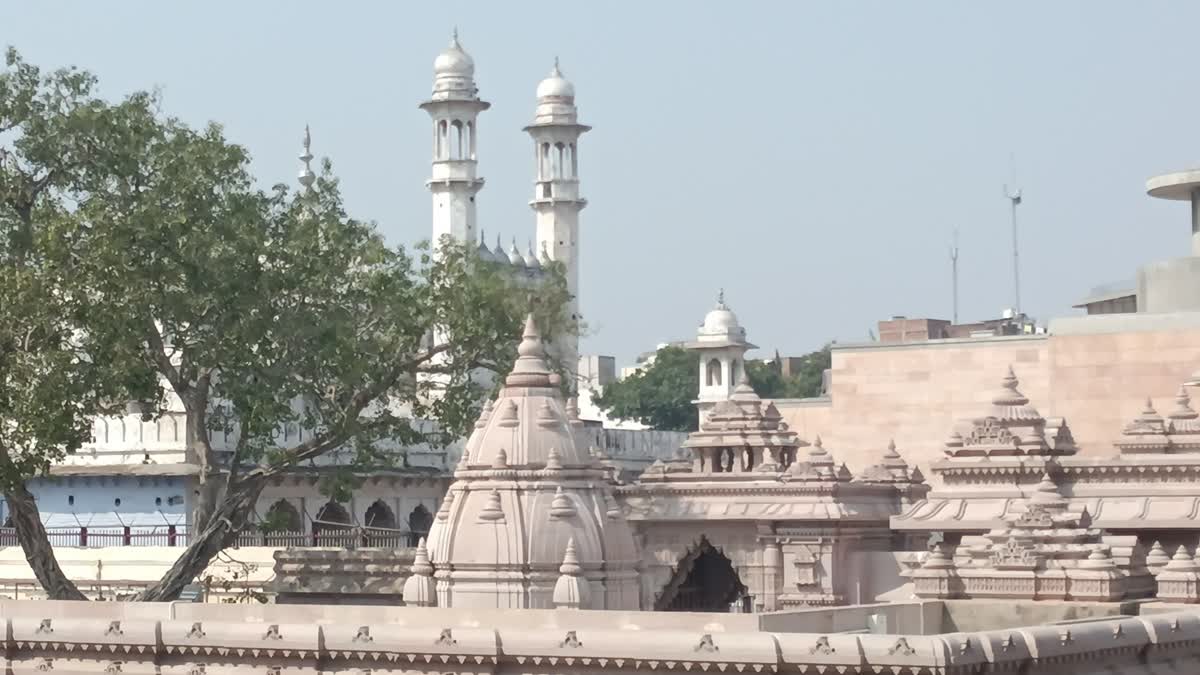Varanasi: The Archaeological Survey of India on Tuesday sought three weeks' more time from the District Court Varanasi in Uttar Pradesh for submitting a report of the survey of the Gyanvapi mosque to check whether it was built on the remnants of a Hindu temple as claimed by the Hindu plaintiffs, sources said.
It is learnt that the ASI has told the court that although the main survey report was ready, the report on the Ground Penetrating Radar (GPR) will take time. The ASI has sought three more weeks time from Varanasi District Judge Ajay Krishna Vishwesh to finalise the report on the GPR. The ASI was to submit the survey report on Nov 17 after many extensions. But it moved a plea in the court seeking extension for submitting the report.
Accepting the plea, the court granted 10 days' extension to the ASI for submitting the report. In its plea, the ASI had on Nov 17 said that the report had been delayed “due to some technical updates in the report”. The ASI was earlier given time till September 4 by the court to submit the report, but they asked for additional time from the court and the court gave the report on September 6, giving additional time.
Also read:ASI seeks 15 more days from court to submit survey report in Gyanvapi case
The ASI had finally completed the survey of Gyanvapi complex on November 2 while the court had asked the ASI to submit the report by November 17 when the latter moved the plea for an extension.
Sources said that the ASI has prepared around 400-page report of the survey of the Gyanvapi mosque to check whether the structure stands on an existing temple as claimed by the Hindu side. The ASI had started the survey of the Gyanvapi mosque in ending July this year after the court on July 21 directed it to do so.
But the survey was briefly disrupted as the matter was in the Supreme Court. However, the High Court, which also heard the matter, directed the ASI to carry on the survey. Sources said that the report running into more than 500 pages will be submitted in both physical and digital formats in a sealed envelope.
The videos and photographs along with the fragmented statues, parts of the dome etc found inside the mosque premises have been preserved by the team members in a special locker located in the District Magistrate's treasury. The 350-year-old dispute: The Hindu side claims that on the orders of Mughal emperor Aurangzeb in 1669, the mosque was built by demolishing a pre-existing temple.
The first petition was filed in the Varanasi District Court on behalf of the self-proclaimed Jyotirlinga Lord Vishweshwar. In the petition, permission was sought to worship in the premises. In 1936, the debate over the ownership of Gyanvapi Mosque escalated. At the same time, three Muslim petitioners demanded that the entire area be declared part of the mosque.
In the hearing, the Muslim side was given permission by the court to offer Namaz in Gyanvapi, in which it was said that Namaz can be offered anywhere in the entire campus. In 1942, the Hindu side approached the Allahabad High Court against the court decision, but the High Court upheld the decision of the lower court and dismissed the petition.
